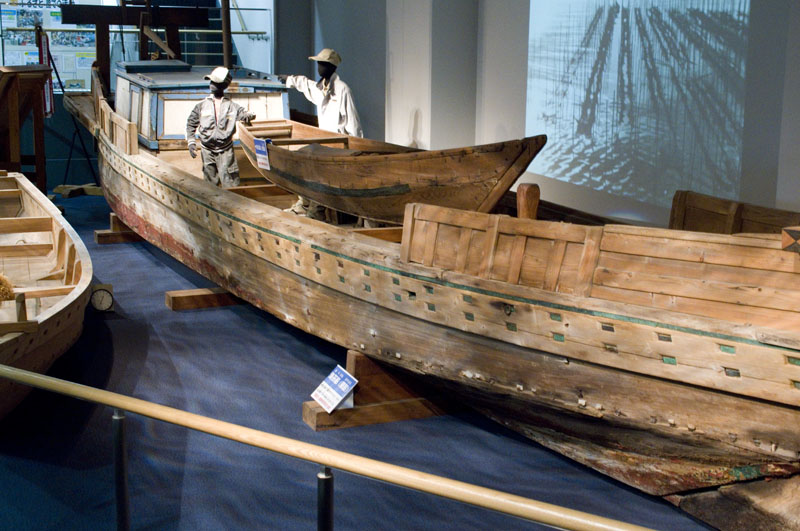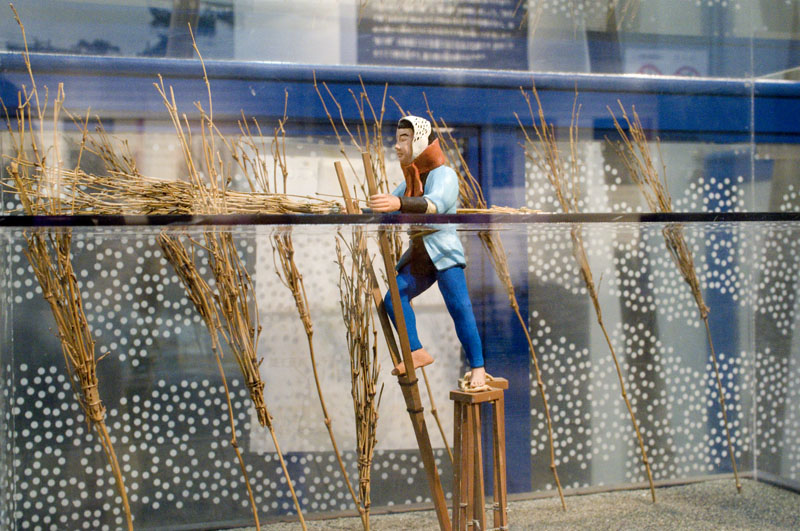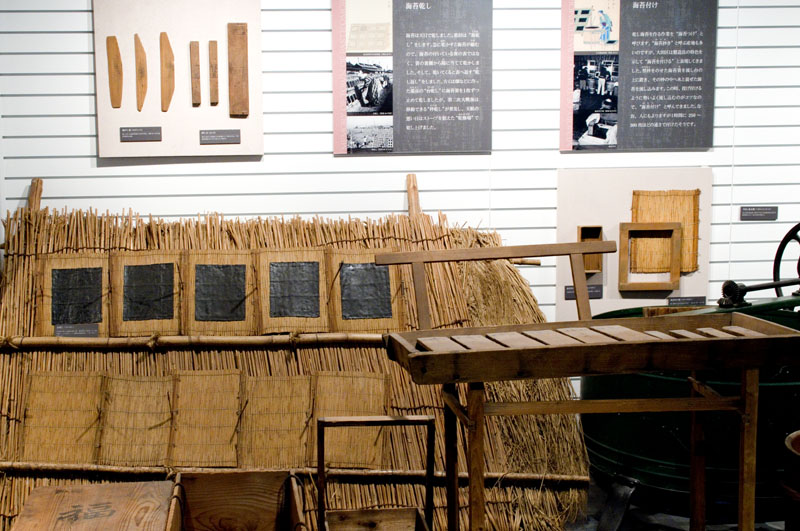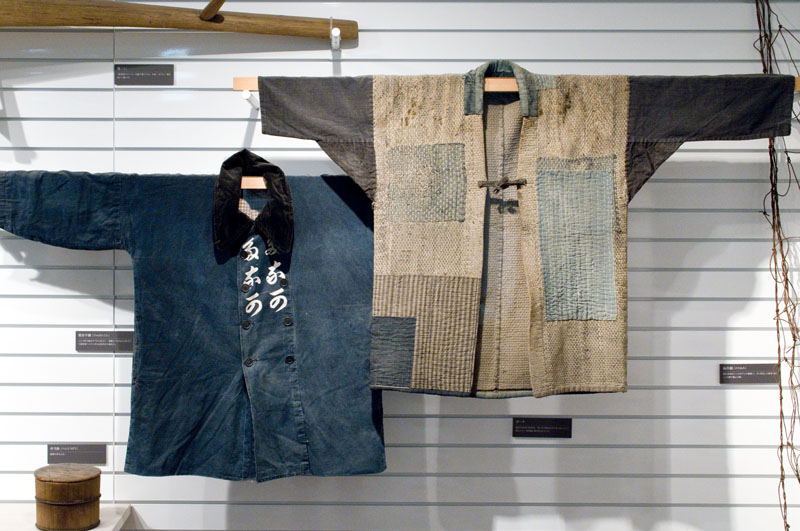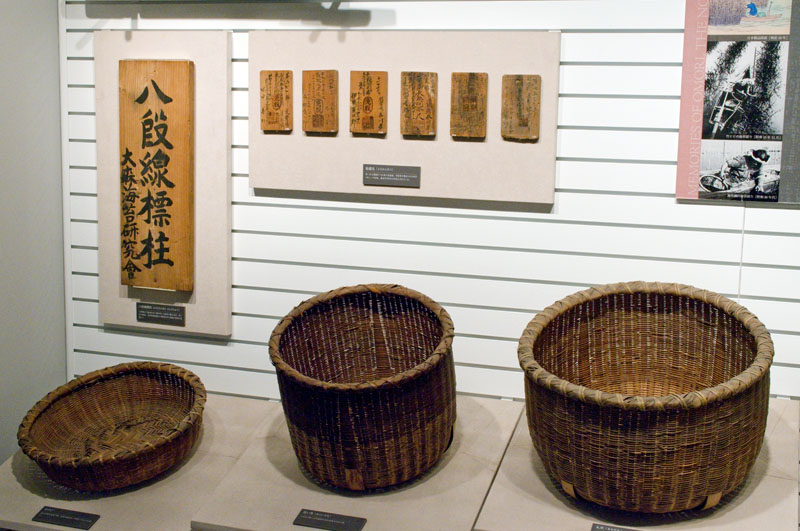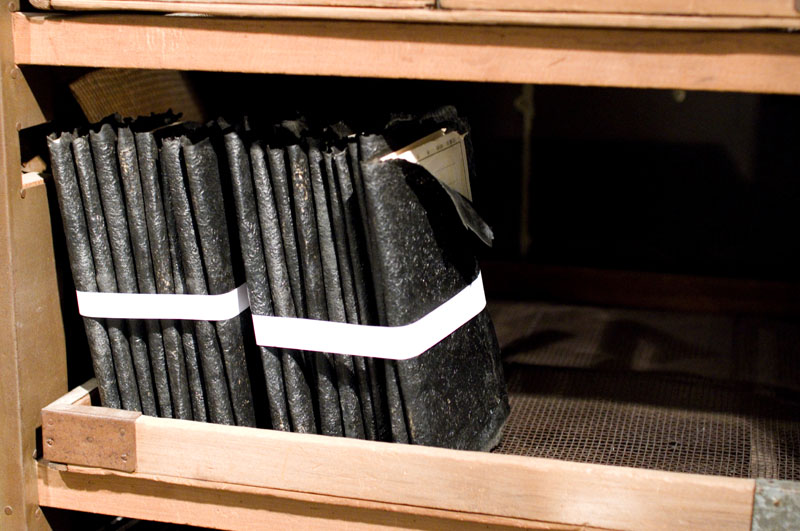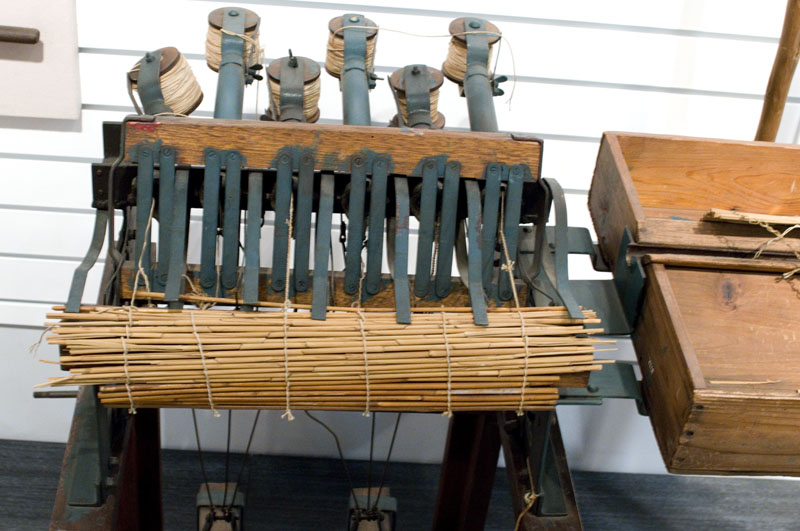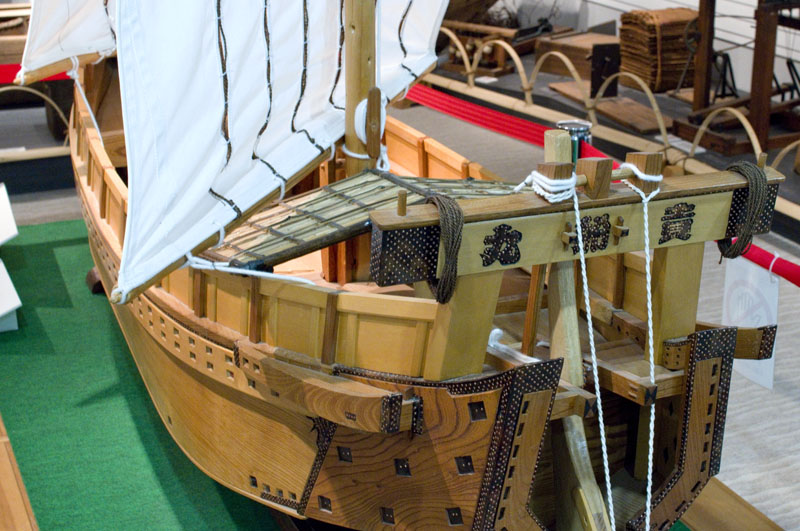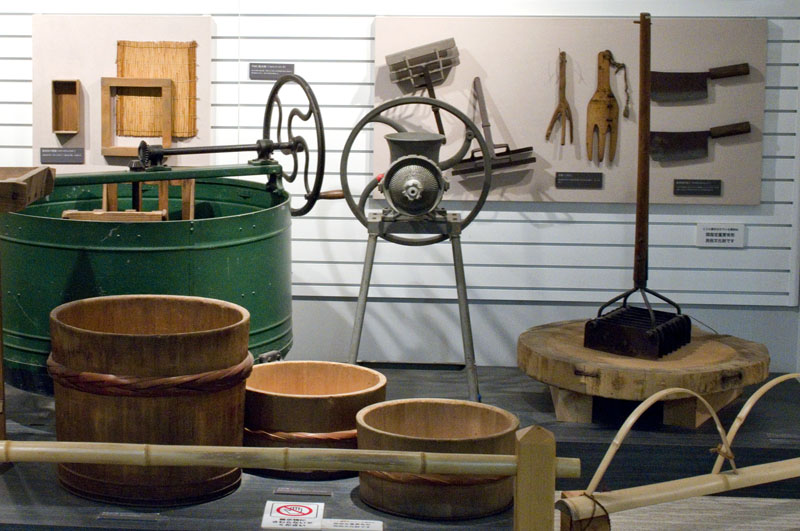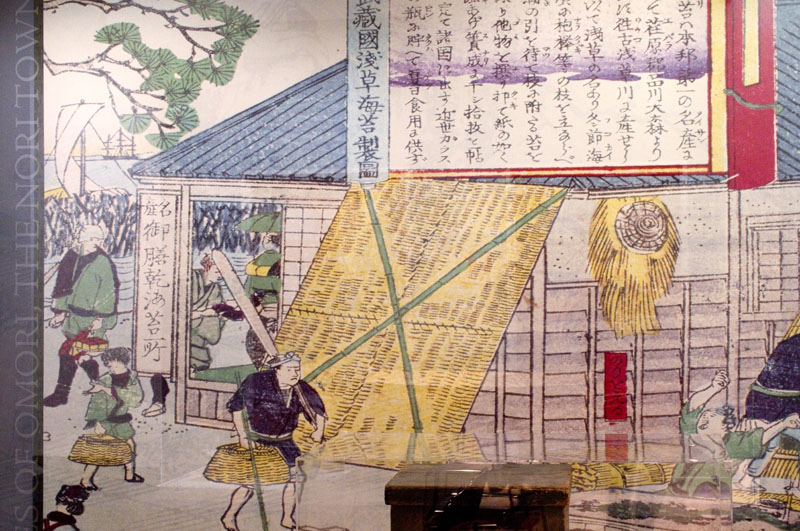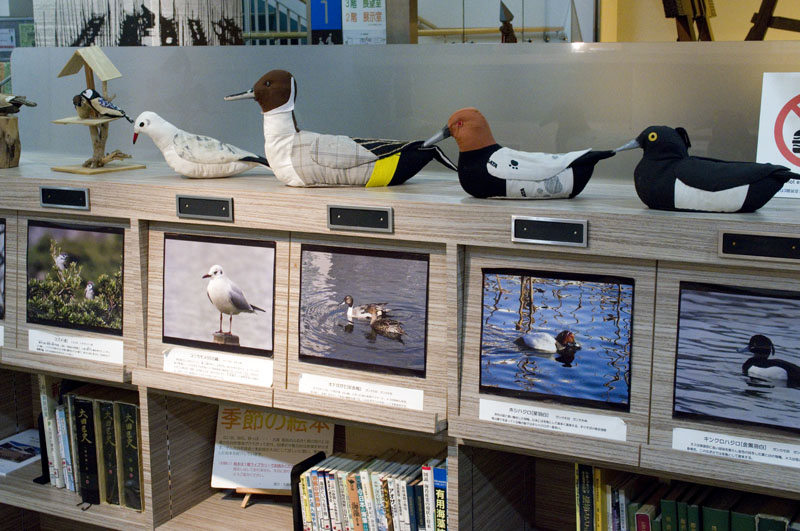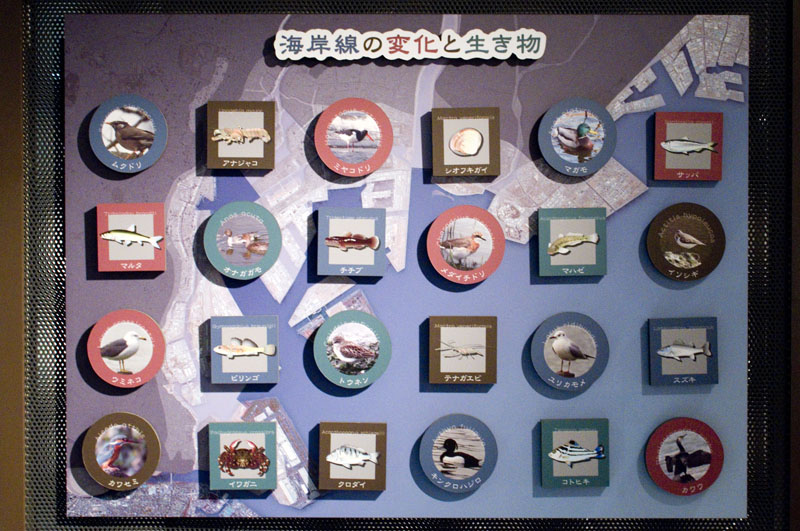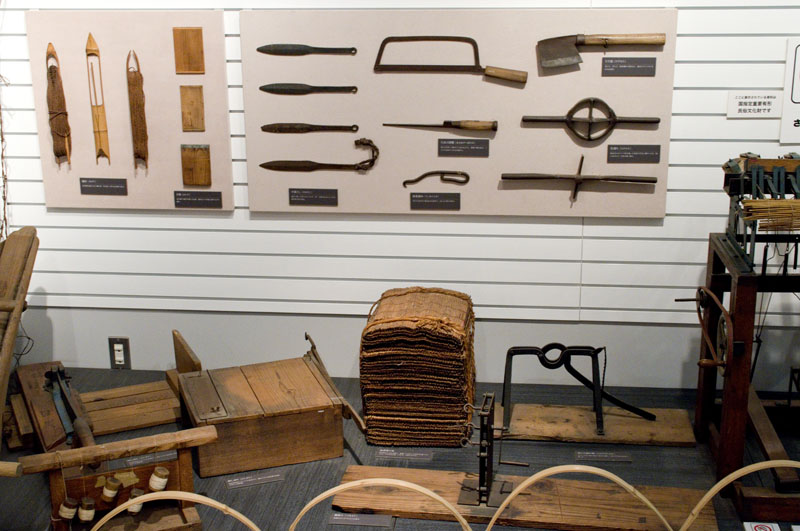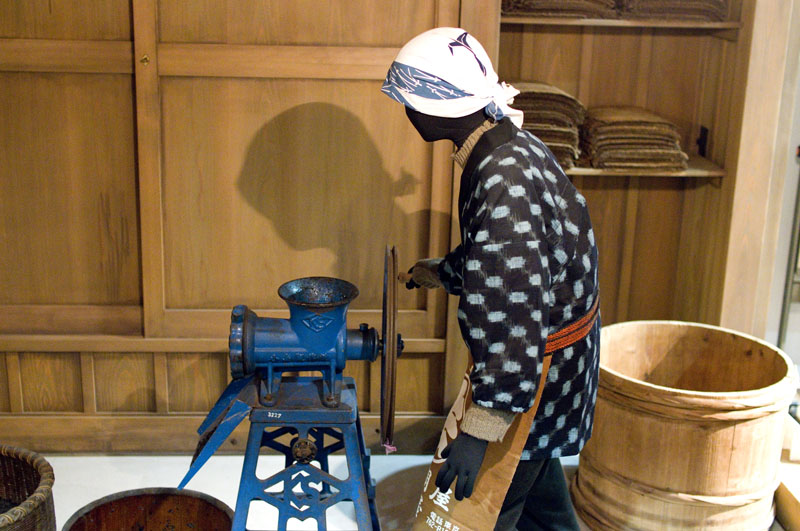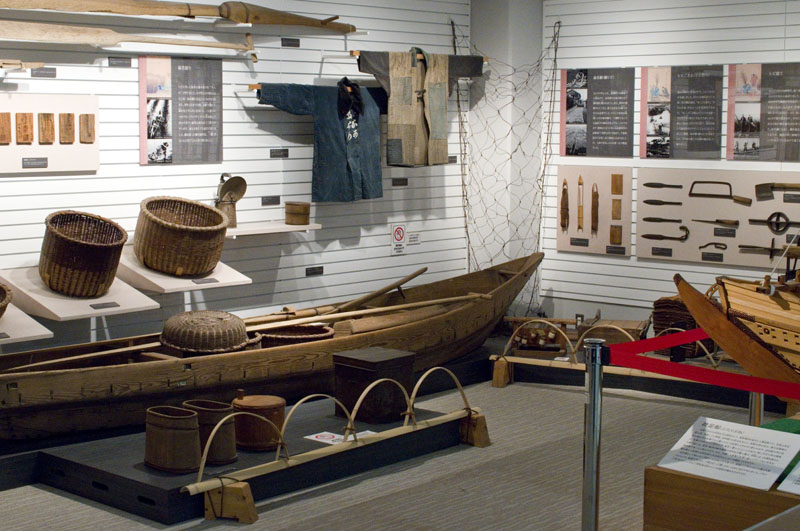
From the early 1700s up until 1962, when the Port of Tokyo began major redevelopment work, the shoreline in this area was the source of some of Japan's finest nori. There are still a number of nori wholesalers located here, and this is also the home of the Omori Nori Museum, probably the only museum in the world devoted entirely to this tasty seaweed product.
Nori was originally cultivated on bamboo sticks that were placed in the shallow waters of Tokyo Bay, although these were later replaced by nets. The complicated, though low-tech, route from cultivated seaweed out in the bay to finished, dried sheets of nori ready for the sushi counter is the subject of this very specialized history and folk culture museum.
The last existing boat that was used for nori harvesting is on display on the first floor here, as is a reconstruction of a small shed that was used as a nori-processing workplace. Upstairs on the second floor is the heart of the collection - the baskets, nets, knives, bamboo-mat rollers and other tools and equipment used for harvesting and manufacturing nori, many of them designated as National Important Properties of Folk Culture by the Japanese government.
Short videos (in Japanese) on both floors illustrate nori production, and there are interactive games designed for younger children (also in Japanese). Almost all signage is in Japanese only, but there's an English-language pamphlet and another handout that explain various nori-making steps and introduce the exhibits. The museum also hosts occasional workshops in nori-making; check their website for details.
